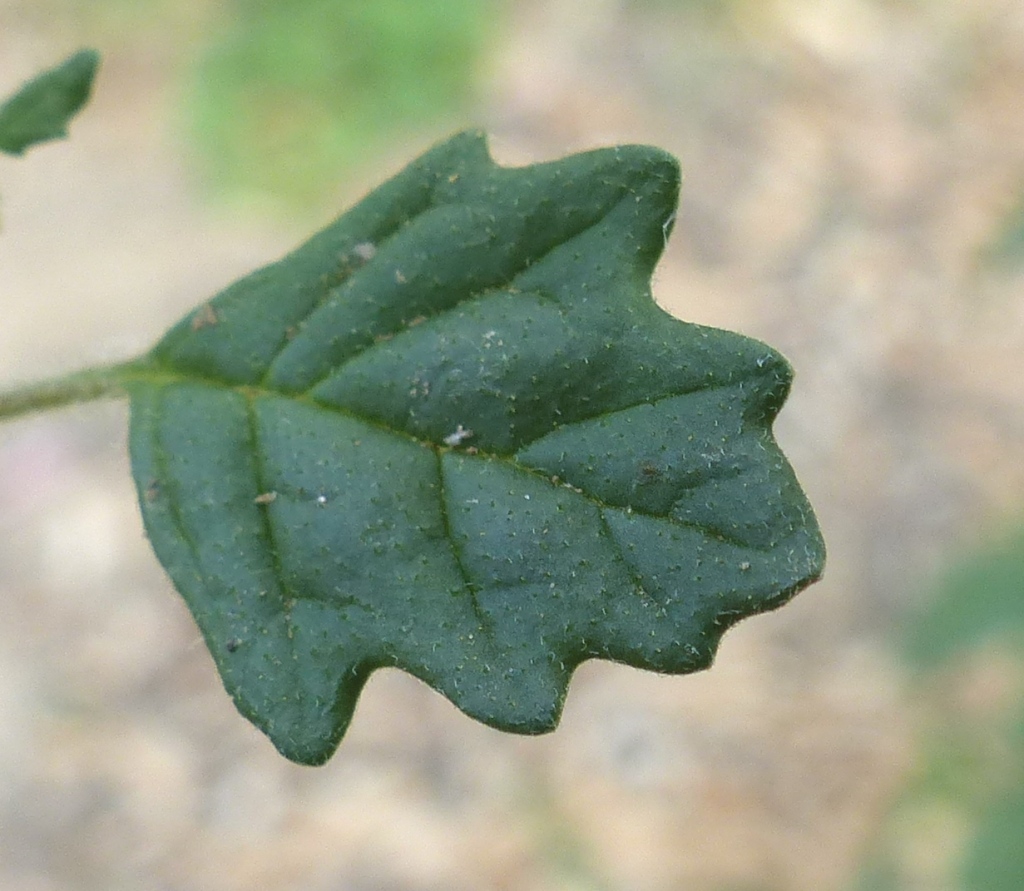Dysphania pumilio
(R.Br.) Mosyakin & ClemantsProstrate or procumbent, often greyish, aromatic annual with branches to c. 50 cm long. Leaves and stems variable covered with twisted septate and subsessile short glandular hairs. Leaves petiolate, ovate to obovate, 5–20 mm long, 3–10 mm wide, margins sinuate to shallowly lobed. Flowers female or bisexual, in small axillary clusters; tepals 5, shortly united at base, often thickening and becoming pale and prominently rounded dorsally with maturity; stamen solitary or absent; pericarp membranous, closely adherent to seed. Seed erect, c. 0.5 mm diam., dark red-brown, remaining enclosed by fruiting perianth when shed. Flowers mostly Dec.–May.
LoM, MuM, Wim, GleP, Brid, VVP, VRiv, MSB, RobP, MuF, GipP, OtP, WaP, Gold, CVU, GGr, DunT, NIS, EGL, EGU, HSF, HNF, MonT, VAlp. All States, naturalised in Tas. Presumed natural occurrences are chiefly in the northern and eastern river systems (e.g. Murray, Loddon, Goulburn, Mitchell and Snowy Rivers), but commonly occurring as a domestic garden weed and in commercial crops in areas beyond the species' original natural range.
Walsh, N.G. (1996). Chenopodiaceae. In: Walsh, N.G.; Entwisle, T.J., Flora of Victoria Vol. 3, Dicotyledons Winteraceae to Myrtaceae, pp. 129–199. Inkata Press, Melbourne.
 Spinning
Spinning



